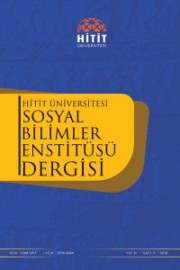YENİ VERİLER IŞIĞINDA BAŞLANGICINDAN M.Ö. II. BİNİN SONUNA KADAR ANADOLU'DA YAKARAK GÖMME (KREMASYON) GELENEĞİ
THE CREMATION TRADITION IN ANATOLIA FROM BEGINNINGS TO END OF THE SECOND MILLENNIUM B.C IN THE LIGHT OF NEW DATA
Author(s): Hamza EkmenSubject(s): Archaeology, Cultural history, Regional Geography, Ancient World, Evaluation research
Published by: Hitit Üniversitesi Sosyal Bilimler Enstitüsü
Keywords: Cremation; Burning and Burying; Anatolia; Crematorium; Grave;
Summary/Abstract: Cremation graves found in Anatolia and around in recent studies provide us with great knowledge. Especially, burned human remains in Çayönü, Demirköy and Asikli Höyük attest that tradition of cremation in Anatolia continued until Neolithic period. In addition, the urne findings from Yenikapi (Istanbul) excavation represented that tradition of cremation was dispersed to vast area during Neolithic periods. In the Hittite manuscprits from second millennium B.C explaining funeral ceremony of king or queen; it is stated that the corpse of the king or queen was buried after burning process. Although no king's tomb, as recited in the manuscripts in this period, has been found until today, there are many graves and cemeteries found that prove cremation activities. The numbers of tombs or cemeteries mentioned above have increased in recent year's researches. In the archaeological excavations conducted in Anatolia and around in the last century, considerable finding about tradition of cremation which was stated in the manuscripts in 2nd millennium B.C., was obtained; in parallel with this, diverse views and arguments have aroused.
Journal: Hitit Üniversitesi Sosyal Bilimler Enstitüsü Dergisi
- Issue Year: 5/2012
- Issue No: 1
- Page Range: 23-49
- Page Count: 28
- Language: Turkish

